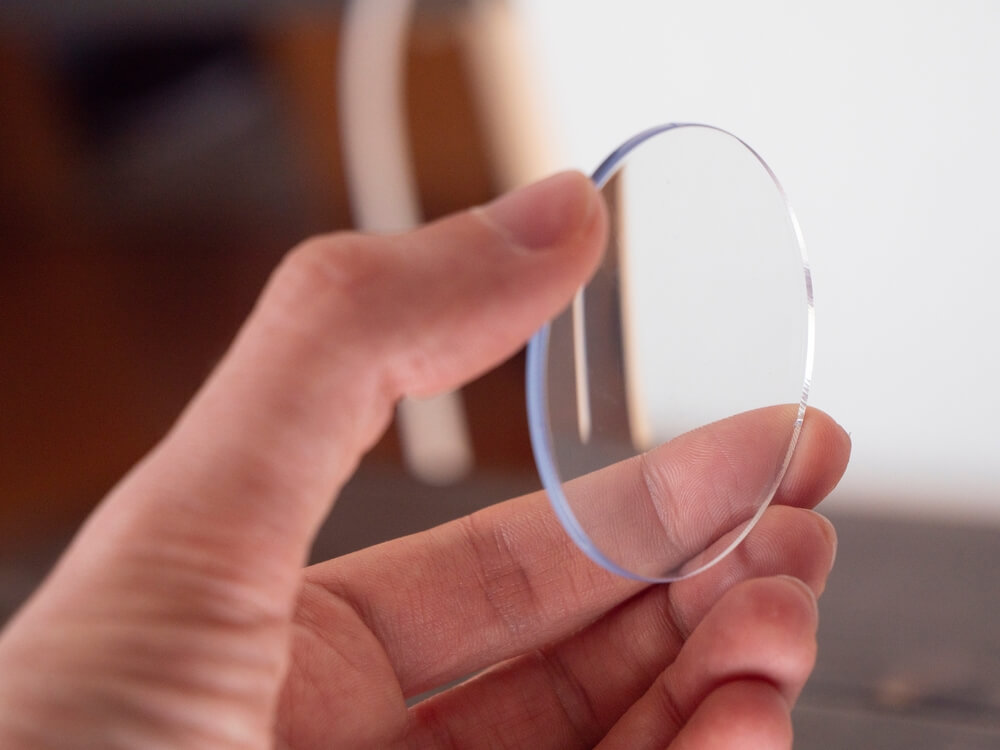Finding the ideal pair of glasses is more than simply aesthetics for someone who wears eyeglasses. It also matters how effectively the glasses support your eyesight and how comfortable and long-lasting they are. The kind of lenses you choose is an important factor to take into account in this respect. For those who wear glasses, high-index lenses offer many benefits, particularly if your prescription is high. Let’s explore the many advantages these lenses provide in more detail.
High Index Lenses
High-index lenses, designed especially for people with higher prescription power, are a contemporary marvel of eyewear technology. With a higher refractive index, this special MR material from Mitsui Chemicals is used to create these lenses. This implies that even with strong prescriptions, they may bend light more effectively than regular plastic or glass lenses, enabling the creation of significantly thinner and lighter lenses.
High Index Lens Benefits
The world of eyeglasses has been changed by high-index lenses. However, precisely what are they? The materials used to make high-index lenses (1.61, 1.67, 1.74), as opposed to standard lenses (1.50 Standard Index), have a higher refractive index. This translates to smaller, lighter, and more comfortable lenses because they can refract or bend light more effectively. However, what makes high-index lenses so crucial?
The reason for this is that they can fit powerful prescriptions without requiring bulky, heavy lenses. Thick lenses can be uncomfortable for people with high prescriptions. They not only give the illusion of having distorted eyes, but they also make the glasses heavier than necessary, which makes them inconvenient to wear for a long time. This issue is addressed with high-index lenses, which enable lighter, thinner choices with superior vision correction.

Thinner and Lighter
The ability of high-index lenses to decrease lens thickness is one of its main advantages. High-index lenses may be up to 40% slimmer than regular lenses. As a result, those with powerful prescriptions can now benefit from a more refined and attractive appearance. Thick lens borders can frequently create the appearance of bulky, antiquated eyewear. Thick lens borders can frequently create the appearance of bulky, antiquated eyewear. You can seem more put together and contemporary with high-index lenses.
High-index lenses are significantly lighter in addition to having a compact shape. This increases their comfort level, which is especially beneficial for people who must wear glasses for long periods. The whole wearing experience is improved because of the decreased weight, which also relieves pressure on the ears and nose. High-index lenses offer the necessary comfort and convenience whether you’re reading a book, using a computer, or going for a stroll outside.
Improved Vision Clarity
Reducing distortion from thicker lenses is another important benefit of high-index lenses. Peripheral vision distortion is a common side effect of traditional lenses, particularly for people with high prescriptions. This may impair overall visual clarity and be distracting. Conversely, high-index lenses provide better vision correction. They lessen the quantity of light that gets bent and warped as it traverses the lens by thickening the lens. As a result, vision becomes more precise and acute. Clear and accurate vision is ensured when driving, using a laptop, or reading a book with high-index lenses.
Increased UV Defense
In addition to offering better vision correction, high-index lenses also give more protection from UV radiation. Long-term UV radiation exposure can cause cataracts, eyelid cancer, pinguecula, and pterygium (surfer’s eye), among other eye conditions. Because the conventional 1.50 lens index cannot give 100% sun protection, there is a risk to your eyes.
On the other hand, high-index lenses are made to effectively block a large portion of UV light. They serve as a shield, protecting your eyes from damaging UV rays and lowering the chance of eye injury. You can value your eye wellness and make sure your glasses offer the required protection by selecting high-index lenses.
Selecting the Appropriate High Index Lens

Regarding the selection of high-index lenses, users have multiple choices. The 1.61, 1.67, and 1.74 high index selections are the most popular ones. The refractive index of the lens substance is indicated by these figures. Choose a Hi-index lens 1.61 if your prescription strength falls between +/- 2.25 & +/- 5.00. For the thinnest lens choice, we suggest using a Hi-index lens of 1.67 or 1.74 if your prescription power is more than +/- 5.25.
High-index lenses are revolutionizing the eyewear industry. They have many advantages, including as lighter and smaller lenses, better UV protection, better looks, and better visual clarity. High-index lenses are a great option if you have a high prescription and need more fashionable and comfy glasses.
Look over the various options carefully to select the ideal high-index lenses for your needs. You may improve your experience wearing eyewear and get clear vision along with extra comfort and elegance with the correct lenses.
How Do Other Lenses Compare to High Indexes?
High-impact lenses may not be a practical choice for many users, despite their capacity to correct vision with a slimmer lens. They do not have the same advantages as other lens varieties.
Polycarbonate Lenses
These kinds of lenses may correct strong prescriptions, offer pristine vision, and withstand impacts. They are a good choice for eyewear that won’t break immediately if you drop it, even though they aren’t exactly as slim as high-index lenses.
Traditional Plastic Lenses
Most plastic lenses are not quite as thin as high index and not nearly as impact-resistant as polycarbonate. These lenses can be used to correct lower prescriptions and have some impact resistance; however, polycarbonate or high-index lenses are better options for stronger prescriptions and greater shatter resistance.
Glass
Glass has the highest index that is currently available. Although it is not as good as other materials in terms of optical quality, the ordinary person won’t notice the difference. Because glass lenses are heavier and more prone to breaking, most individuals choose not to use them because they are unpleasant, delicate, and even dangerous. Consider a glass lens shattering in front of the eyes; while unlikely, why get the risk when there are some excellent alternatives available? Glass is your best bet if you require the best optics available. You can probably go with a high-index plastic such as traditional or polycarbonate, which still gives you superb optics and clear vision if you aren’t spending your days fixing watches or checking gems.
Final Words
The search for the perfect eyewear transcends aesthetics and centers on factors like comfort, longevity, and improving eyesight. For people with higher prescriptions, high-index lenses—made of advanced substances with a greater refractive index—offer a thin, light, and visually pleasant option. They are a great option because they offer durability and improved eyesight. Take into consideration high-index lenses and adhere to the suggested procedures to personalize your glasses for an enhanced visual experience.


